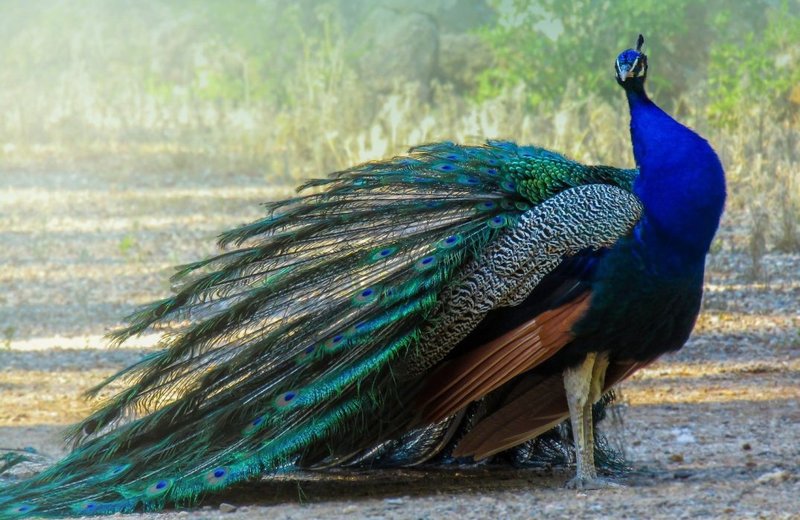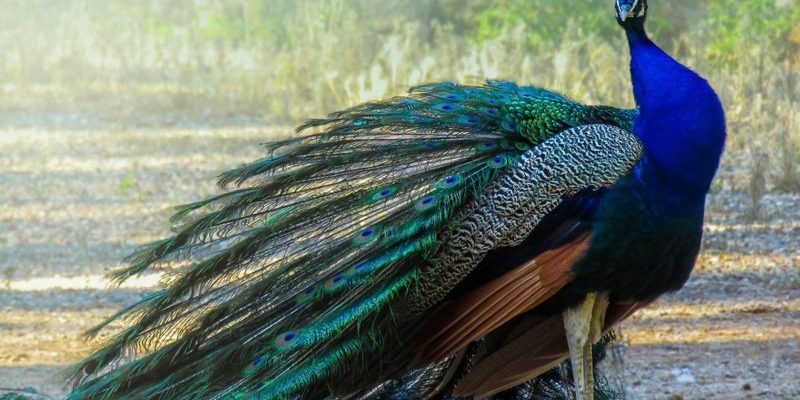
Imagine sipping coffee while gazing at one of these majestic creatures. You might not realize that the peacock’s beauty is just the tip of the iceberg. From their unique behavior to their cultural significance, they’re full of surprises. Here are ten things about peacocks that even some bird enthusiasts might not know!
1. The Peacock is Actually a Male
When we talk about peacocks, we’re referring to the males of the species. The actual term for the bird is Peafowl, which encompasses both males and females. Females are called peahens, and they don’t sport the impressive tail feathers that males do.
You might be wondering why? The answer lies in evolution. Male peafowl use their stunning tail feathers, also known as a train, to attract females. Scientists believe that the size and quality of these feathers signal to peahens that a male is healthy and genetically fit. The more eyes on a train, the more attractive the male appears!
So, next time you see a peacock displaying its feathers, remember it’s not just for show—it’s a mating display that has real-life implications.
2. Peacocks Aren’t Just Beautiful – They’re Smart Too!
Here’s the thing: peacocks are not only attractive; they are also quite intelligent. They possess an ability to adapt to their environment, which helps them survive in the wild. For instance, they can recognize their own reflection in mirrors, showing a level of self-awareness that not all animals have.
In addition, peafowl are known for their strong social structures. They thrive in flocks, and their communication is quite advanced. They use a variety of calls to convey different messages, whether it’s warning others of predators or simply socializing with their peers.
You might also find it interesting that peacocks can remember their friends and enemies. This ability helps them navigate their social circles effectively, so they can avoid confrontation when necessary.
3. They Can Live a Long Time!
Peacocks have impressive lifespans, especially when compared to other birds. In the wild, they can live for about 15 years, but in captivity, they can reach up to 25 years! This longevity is a testament to their adaptability and resilience.
Caring for peacocks in captivity also plays a role in their lifespan. If they have access to a proper diet, a safe habitat, and minimal stress, they can thrive well into their golden years. Isn’t it amazing to think of how long these beautiful creatures can be a part of our lives?
4. Their Feathers Are More Than Just Looks
You might think that those gorgeous feathers are just for aesthetics, but they serve practical purposes, too. Peacocks have a unique feather structure that helps them stay cool in hot weather. The microscopic structures in their feathers reflect sunlight and create a cooling effect.
Additionally, the feathers are incredibly lightweight, allowing for agile movements. Their transportable nature means that they can run swiftly or fly short distances to escape predators. This is a perfect example of how beauty and functionality can go hand in hand in the animal kingdom.
5. Peacocks Display Different Colors
While most of us instantly think of vibrant hues of blue and green when we picture a peacock, they can actually display a remarkable range of colors. Depending on the light, the feathers can shimmer with various shades, creating a mesmerizing effect.
These color changes happen due to structural coloration—a process wherein microscopic structures in the feathers reflect different wavelengths of light. So, what appears to be a solid blue can shift to green, turquoise, or even gold as the light changes. It’s like having a mood ring in the form of feathers!
6. Peacocks Are Omnivores
Peafowl aren’t picky eaters. They have a diverse diet that includes seeds, fruits, insects, and even small mammals. This adaptability can be a lifesaver in the wild, especially when food sources fluctuate.
In fact, peacocks have been seen foraging for food in various environments—from lush forests to urban areas. Just imagine a flamboyant peacock strutting through a city park, looking for a snack! Their flexible eating habits make it easier for them to survive in various habitats.
7. They Are Native to the Indian Subcontinent
Most people associate peacocks with India, and for a good reason. The Indian Peafowl, known as *Pavo cristatus*, is native to the Indian subcontinent. In fact, it’s also the national bird of India!
Peafowl have been celebrated in various cultures for centuries. In Indian mythology, they symbolize beauty, pride, and grace. You’ll often see them in art, literature, and even in religious contexts. With such an illustrious background, it’s no wonder these birds hold significant cultural importance.
8. Peacocks Have Unique Mating Rituals
Let me explain something that might surprise you. Male peacocks don’t just strut around to attract females; they also perform complex courtship dances. When a peacock wants to impress a peahen, he will fan out his impressive tail feathers and shake them in a dazzling display.
This dance isn’t just for show; it also involves vocalizations. The males produce a range of calls that can be heard from long distances. It’s like they are serenading the females, hoping to win their hearts. Who wouldn’t be captivated by such an intricate performance?
9. They Can Fly Short Distances
While peacocks might not be known for their flying skills, they can indeed take to the skies. They can fly short distances, usually up to about 10 feet in the air. This ability is quite handy for escaping predators or moving from one roosting spot to another.
Their strong legs and lightweight feathers give them the necessary lift for these short bursts of flight. So, if you ever see a peacock take off, remember, they might just be showing off another one of their skills!
10. Peacocks Are Excellent Watchers
Finally, one of the most fascinating aspects of peacocks is their vision. They have excellent eyesight and can see a wider range of colors than humans—about 180 degrees around them. This keen vision helps them spot predators from a distance.
Their vigilance is one of the reasons they are such resilient birds. When in a flock, they take turns watching for dangers while the others feed. It’s a perfect example of teamwork in the animal kingdom. Imagine how much safer they feel knowing someone is always looking out for them!
In conclusion, peacocks are not just a pretty face in the bird world. They possess a rich array of traits and behaviors that make them incredibly unique. From their brilliant colors to their wise social structures, they hold a special place in nature. So the next time you see a peacock, remember that there’s a lot more going on than just a colorful display.

